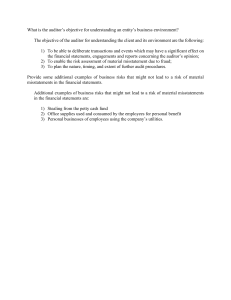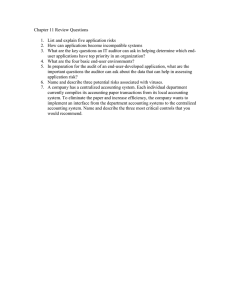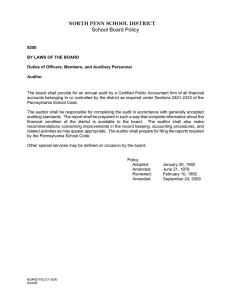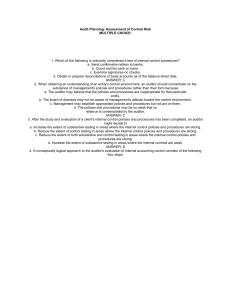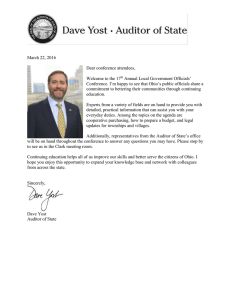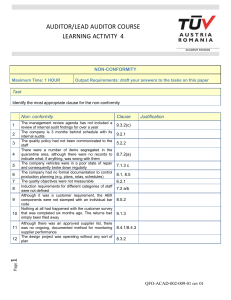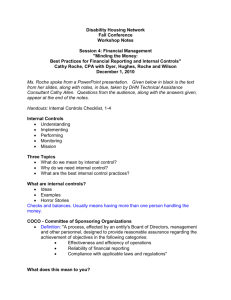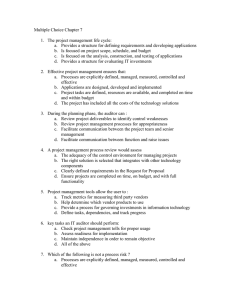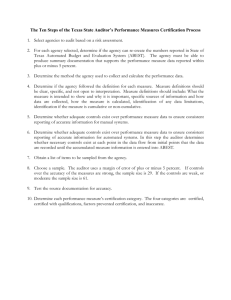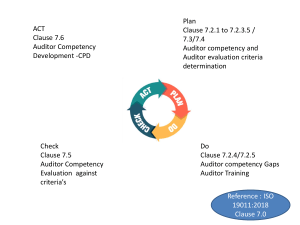Multiple Choice Chapter 17
advertisement
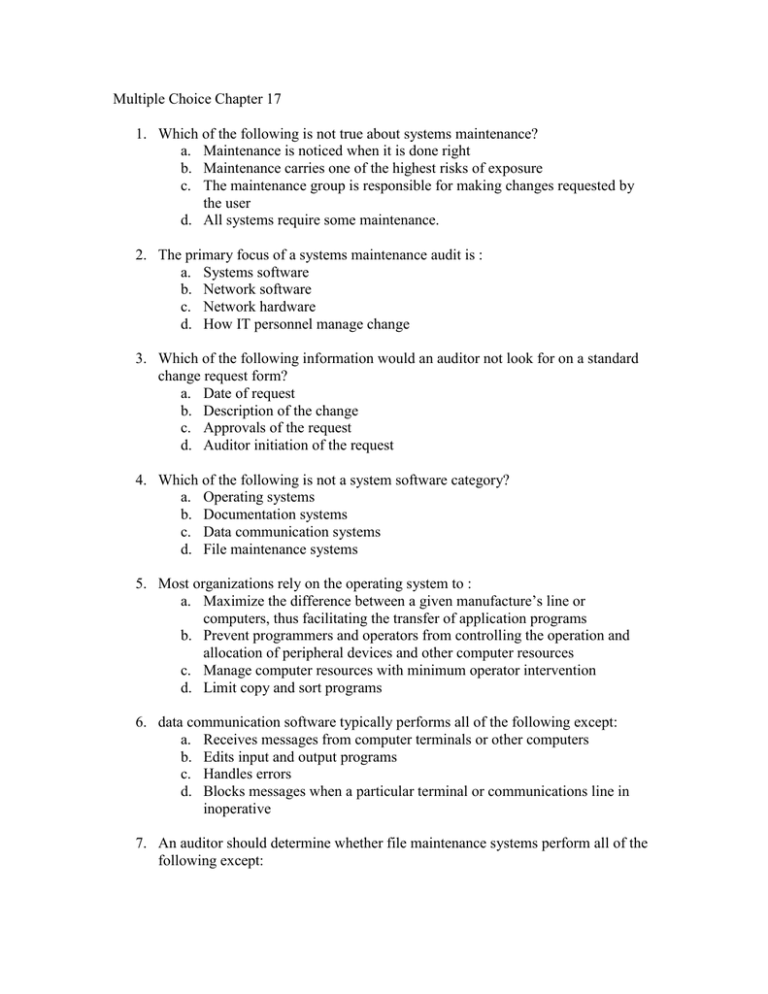
Multiple Choice Chapter 17 1. Which of the following is not true about systems maintenance? a. Maintenance is noticed when it is done right b. Maintenance carries one of the highest risks of exposure c. The maintenance group is responsible for making changes requested by the user d. All systems require some maintenance. 2. The primary focus of a systems maintenance audit is : a. Systems software b. Network software c. Network hardware d. How IT personnel manage change 3. Which of the following information would an auditor not look for on a standard change request form? a. Date of request b. Description of the change c. Approvals of the request d. Auditor initiation of the request 4. Which of the following is not a system software category? a. Operating systems b. Documentation systems c. Data communication systems d. File maintenance systems 5. Most organizations rely on the operating system to : a. Maximize the difference between a given manufacture’s line or computers, thus facilitating the transfer of application programs b. Prevent programmers and operators from controlling the operation and allocation of peripheral devices and other computer resources c. Manage computer resources with minimum operator intervention d. Limit copy and sort programs 6. data communication software typically performs all of the following except: a. Receives messages from computer terminals or other computers b. Edits input and output programs c. Handles errors d. Blocks messages when a particular terminal or communications line in inoperative 7. An auditor should determine whether file maintenance systems perform all of the following except: a. The file maintenance system consistently and accurately controls automated data files. b. The program library system consistently and accurately controls application programs. c. Control features of the file maintenance systems are fully used and cannot be overridden or bypassed. d. Whether manual procedures support and enhance the reliability of the file maintenance systems. 8. Communication is the key to managing expectations because: a. When expectations are set too low, people tend to become frustrated, upset, and disappointed with the results b. When expectations are set to high, people may have difficulty adapting or are surprised with the extent of the change c. A rigorous communications program is needed to allow people time to accept and fully use the new system. d. People need to be notified once or twice about change.
